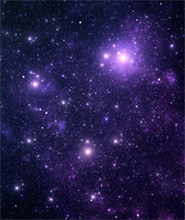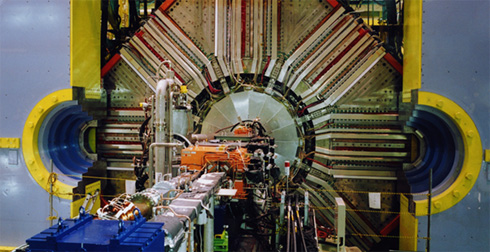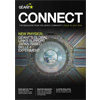BELLE II and GÉANT – New physics could help us better understand the universe
|
Copyright: DESY |
The Challenge
The Standard Model is thought to be the golden rule of particle physics. It explains particle behaviour and correctly predicted the existence of particles like the Higgs Boson. However it does not explain many other mysteries in physics, such as the existence of theoretical dark matter, one of the most elusive substances in the universe.
Understanding dark matter is key to our understanding of the universe’s movement and structure. It is considered an important puzzle piece to decode the complexities of the universe.
The Solution
 BELLE II is a new particle detector being developed to help researchers try to understand. It is an updated and ultra-precise version of the original BELLE detector which confirmed the existence of other particles that don’t fit the Standard Model. This latest version is likely to collect 50 times more data than the original version, (approximately 25 Petabytes per year), proving an even bigger challenge than before.
BELLE II is a new particle detector being developed to help researchers try to understand. It is an updated and ultra-precise version of the original BELLE detector which confirmed the existence of other particles that don’t fit the Standard Model. This latest version is likely to collect 50 times more data than the original version, (approximately 25 Petabytes per year), proving an even bigger challenge than before.
GÉANT peers directly with ESNet (Energy Sciences Network, that connects PNNL) and SINET4 (Science Information NETwork, that connects KEK) to provide sufficient and reliable connectivity to both the North American and Japanese sites for the BELLE II European partners, who are connected to GÉANT via their national NRENs.
Key Benefits
GÉANT’s high speed links with the world’s other major international research and education networks will benefit the BELLE II worldwide user community, enabling them to easily and efficiently access the analysis data stored at the European distributed Tier 1 sites.
Over the next 1-2 years, the quality and bandwidth of eastward connections from GÉANT to Japan, will be greatly improved providing tangible benefits to the BELLE II experiment, and also to a big number of other scientific collaborations between Europe and Japan.
Belle II will complement experiments done with the Large Hadron Collider (LHC) in Geneva, Switzerland, where physicists famously confirmed the existence of the Higgs boson particle in July 2012. Even though the discovery of the Higgs lent more support to the Standard Model, physicists are using data from the LHC to look for evidence of particle behaviour beyond the Standard Model.
|
“GÉANT is proud to be working closely with another truly global collaborative project that is looking at the big questions behind the creation of the universe. We anticipate a strong and productive relationship that will not only drive forward scientific discovery, but will also help to promote stronger connectivity and links with Japan, for the benefit of all research and education users.” Vincenzo Capone, GÉANT’s pan-European user liaison team |
|---|




